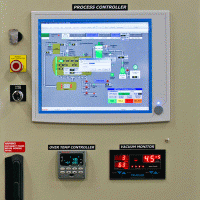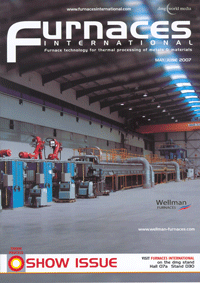Transient liquid phase bonding, also known as diffusion brazing, is a metal joining process that produces a high-quality bond through the isothermal solidification of a melting point depressant-rich interlayer. The advantage of using diffusion brazing over conventional processes is that the microstructural properties in the fusion zone are very similar to those of the base metal. The process is broken down into four distinct stages; heating, dissolution, isothermal solidification, and homogenization. The rate-controlling stage of the process is the isothermal solidification stage which may take hours or even days.
Recently, VAC AERO teamed up with researchers from the Mechanical Engineering Department of the University of Waterloo (Waterloo, Ontario) to develop a practical method for diffusion brazing of Inconel 738. This alloy is used extensively in turbine engine hot section components. Brazing techniques are often used to restore these components when they have been damaged in service, but conventional vacuum brazing produces a repair with limited durability.




